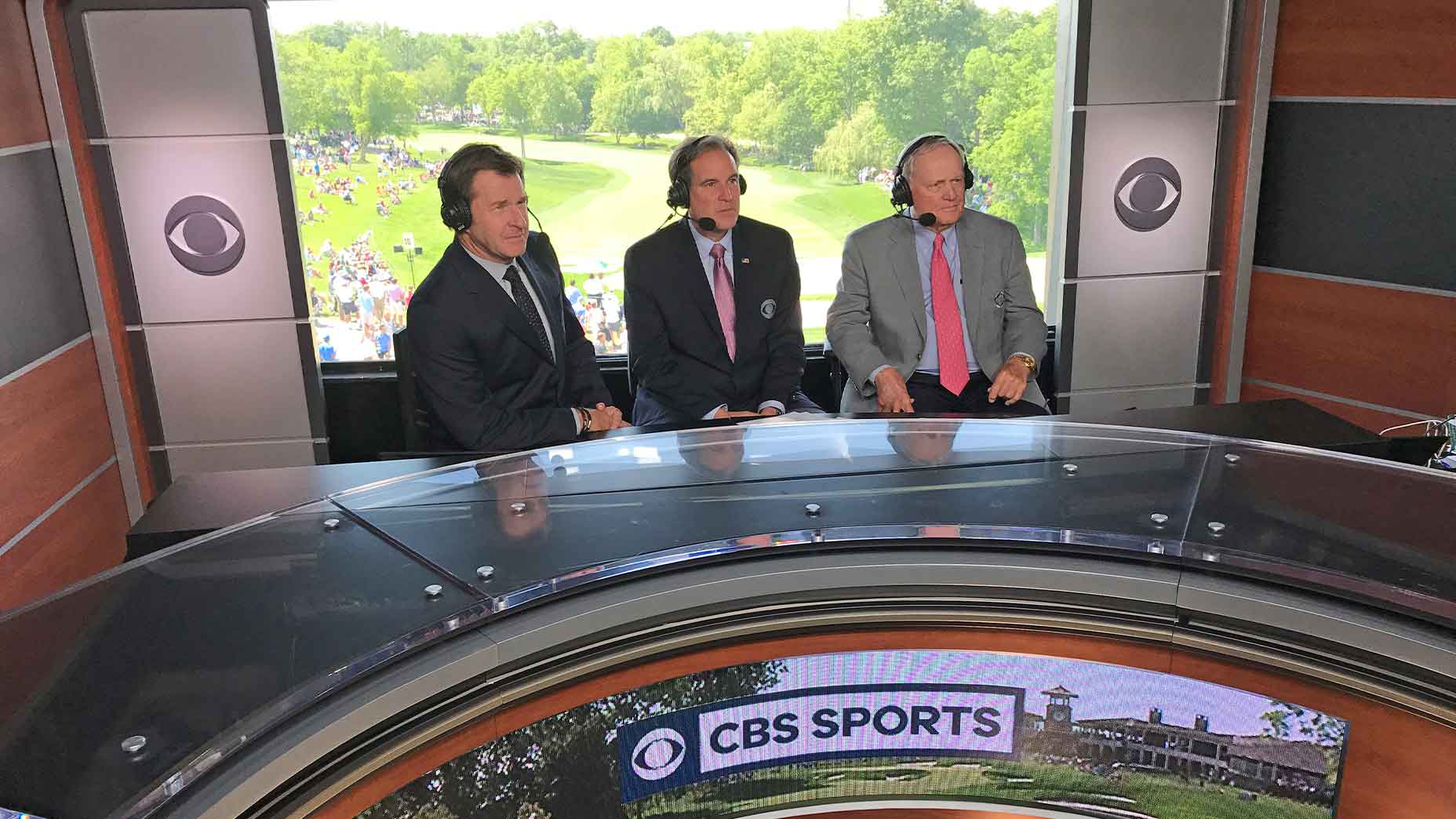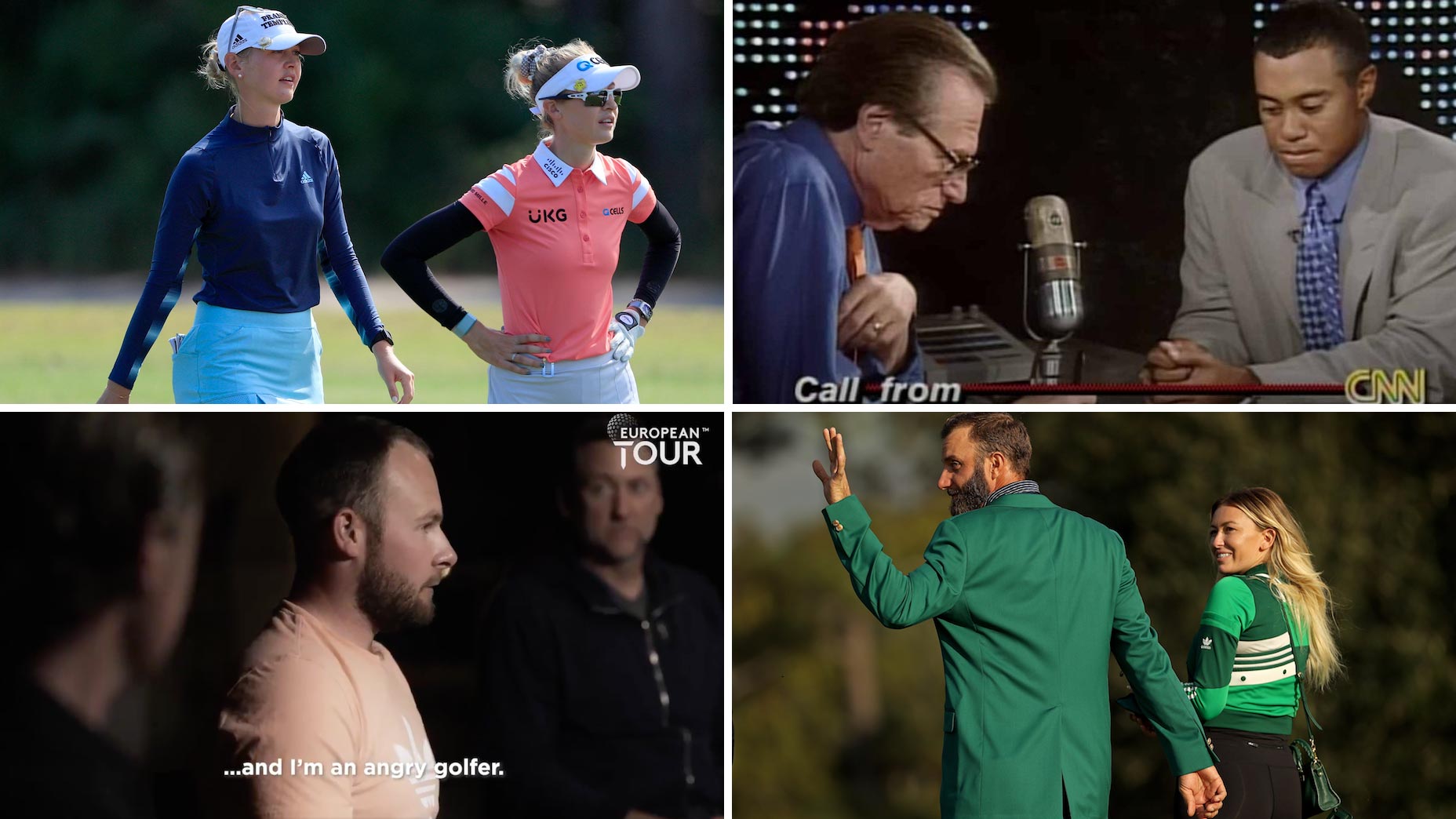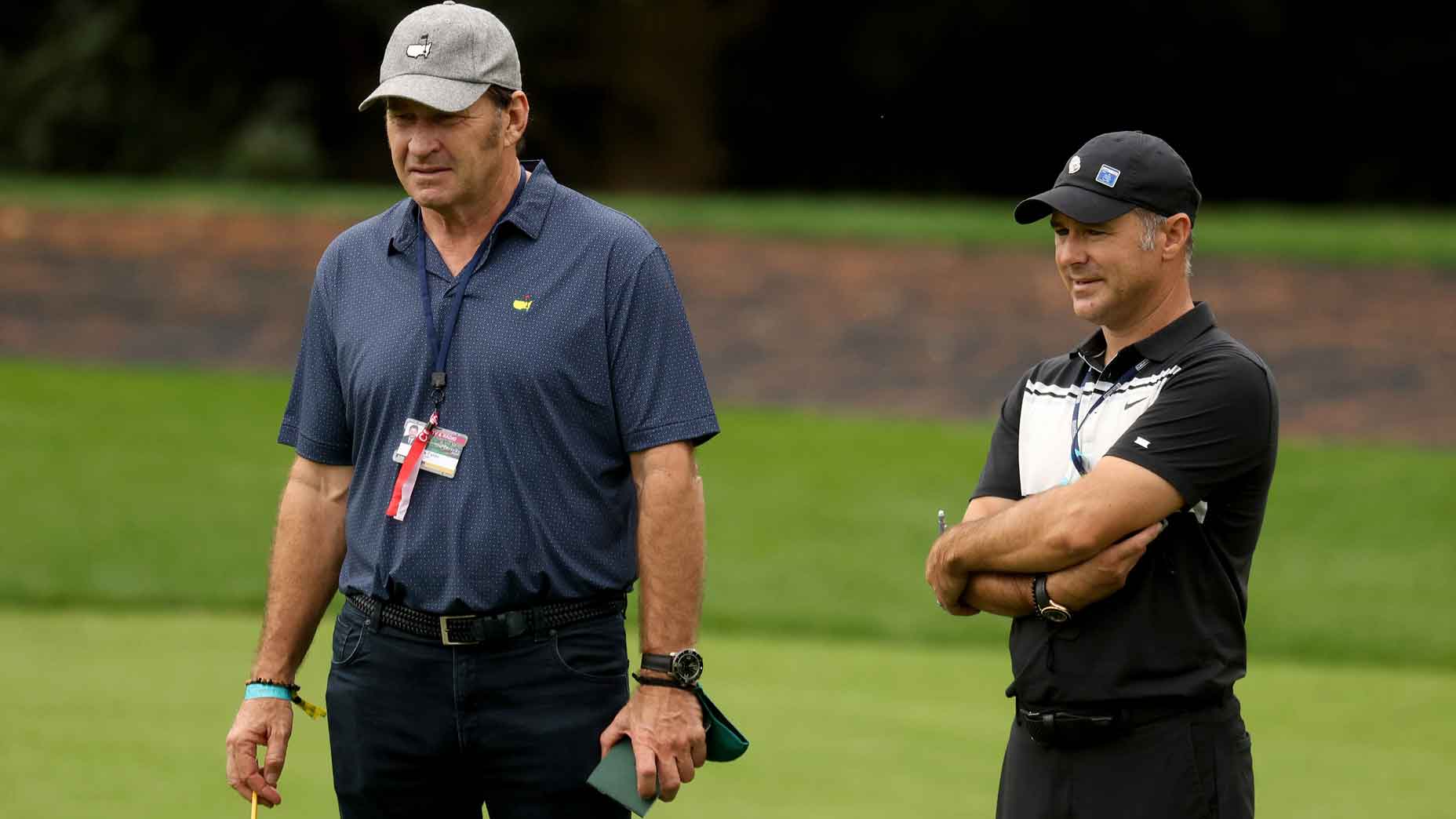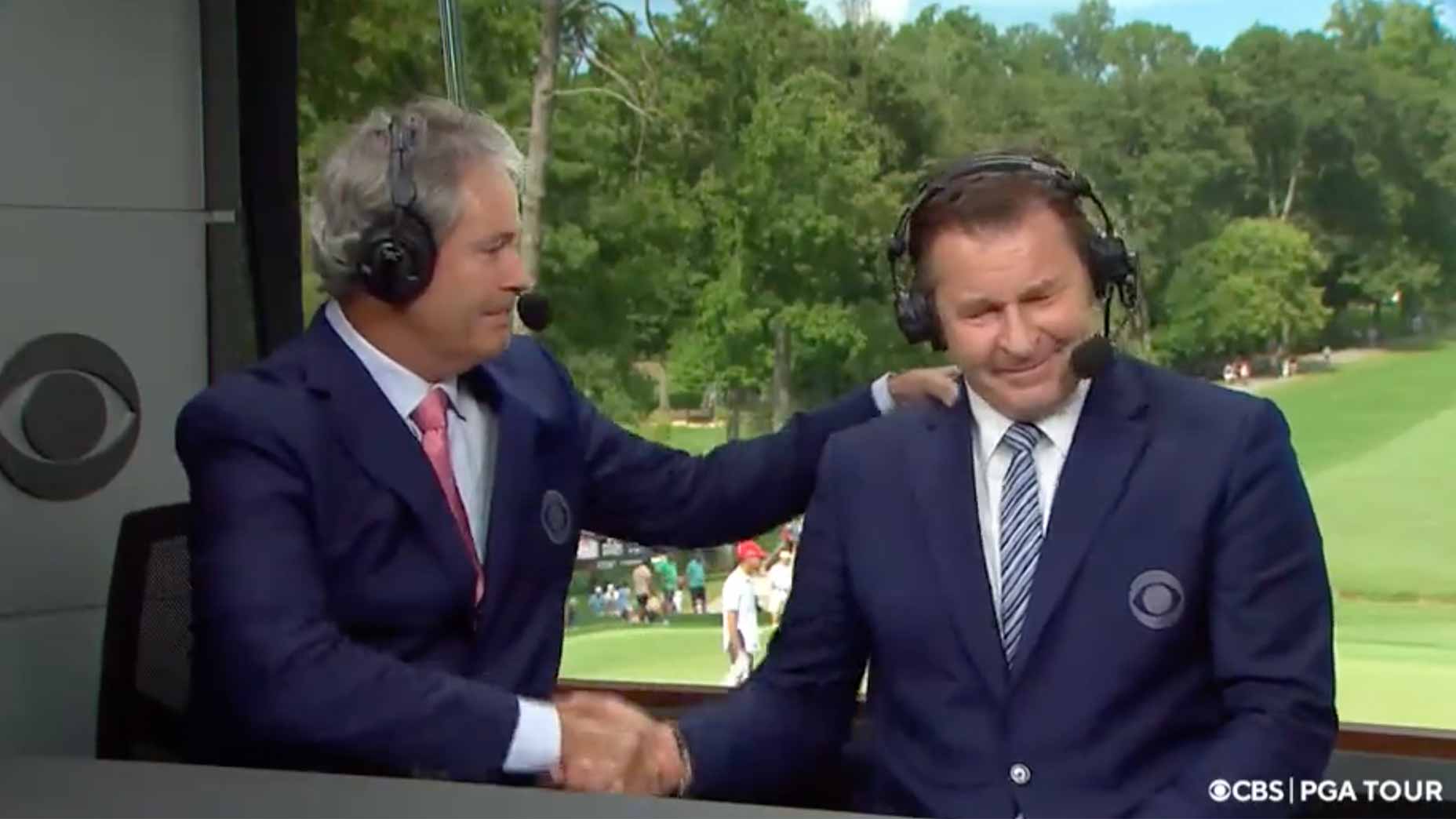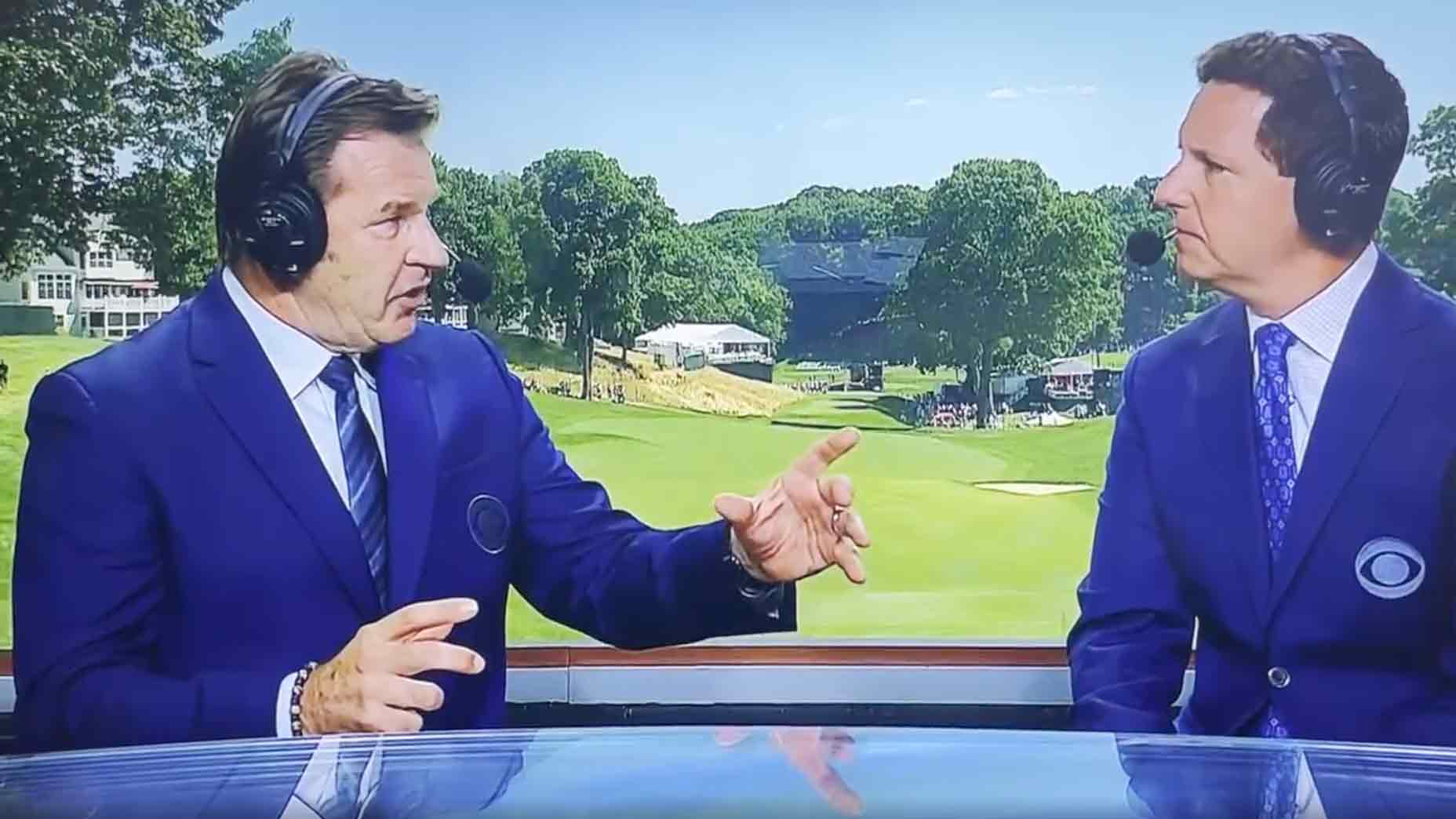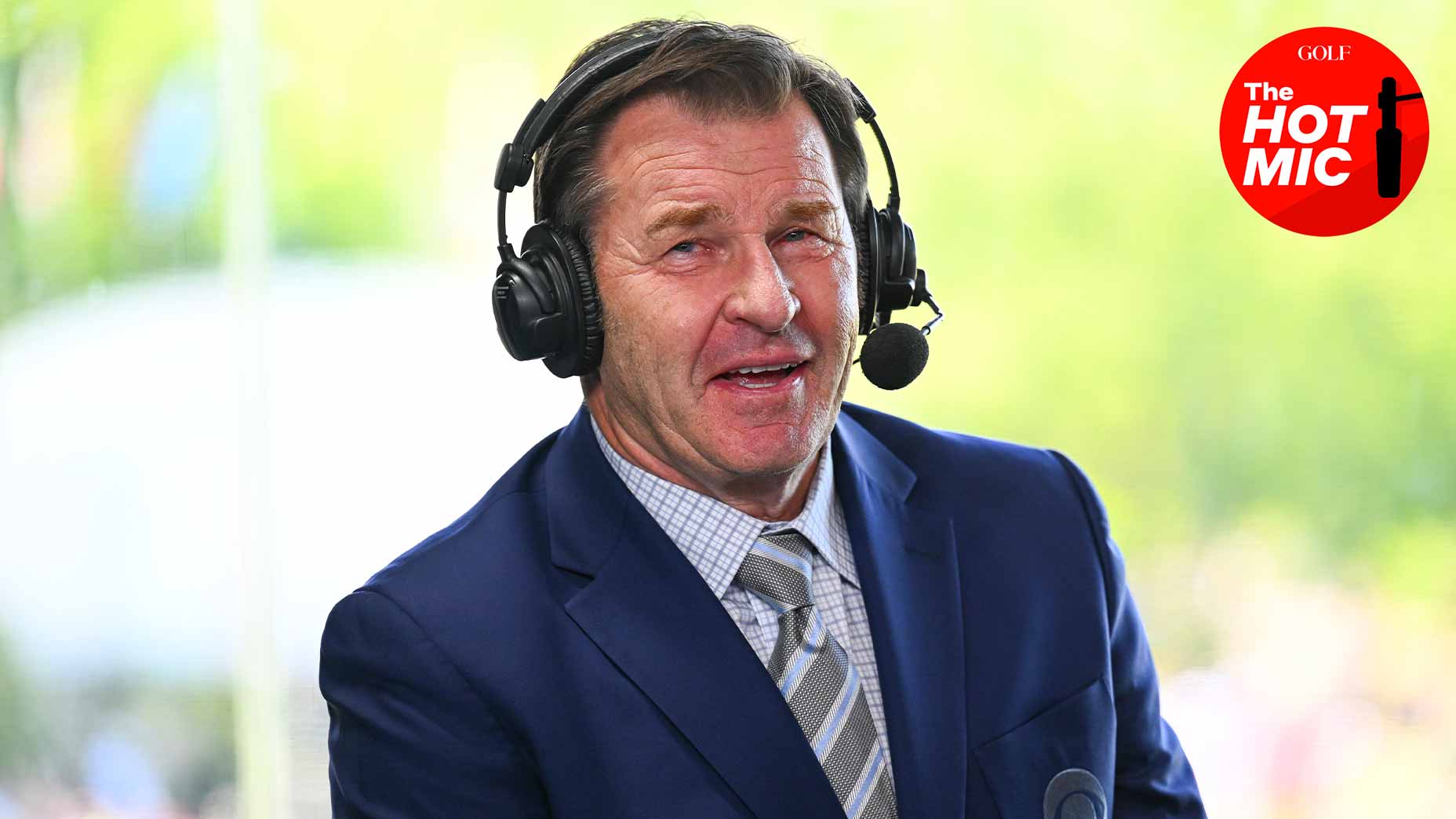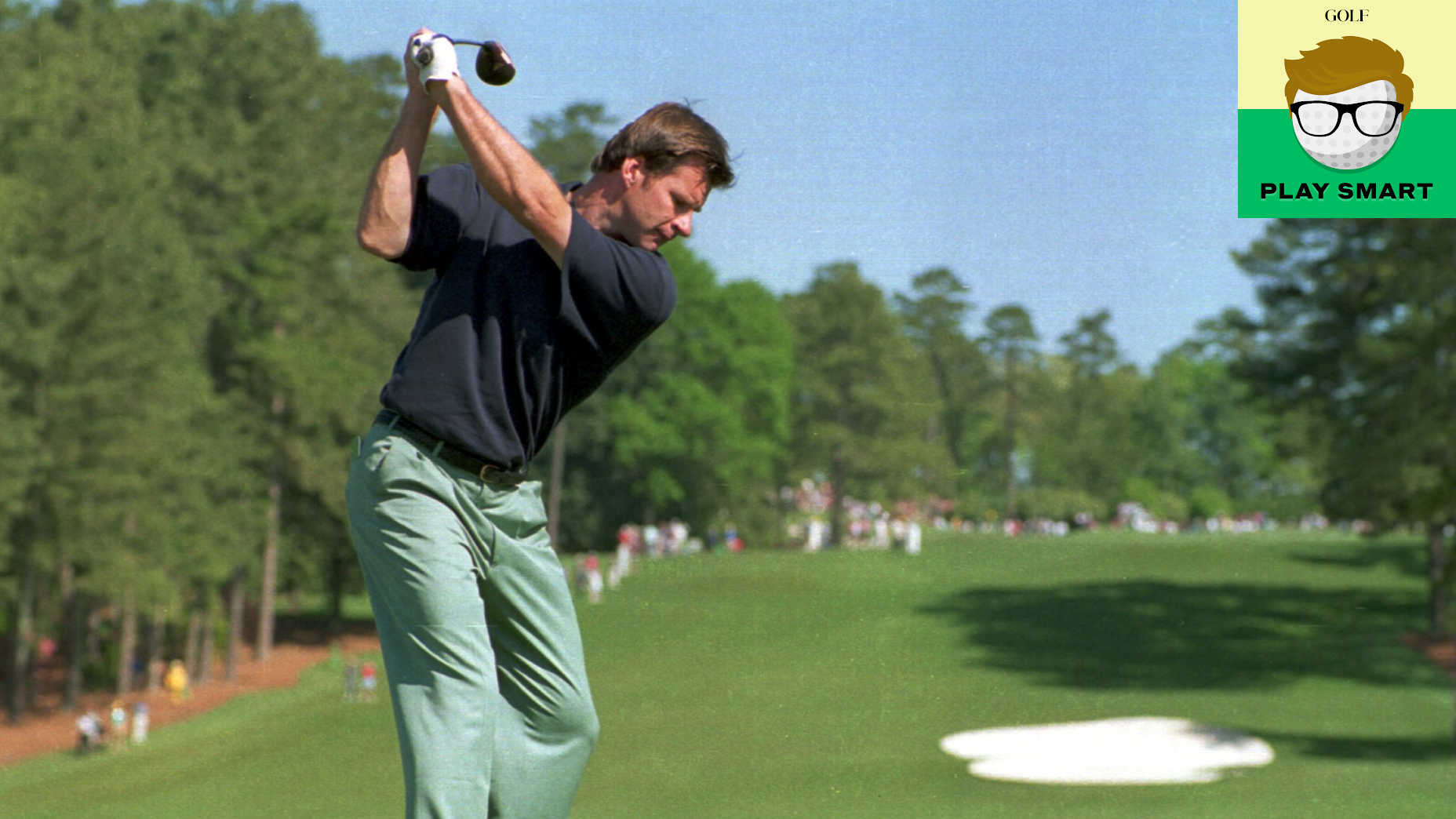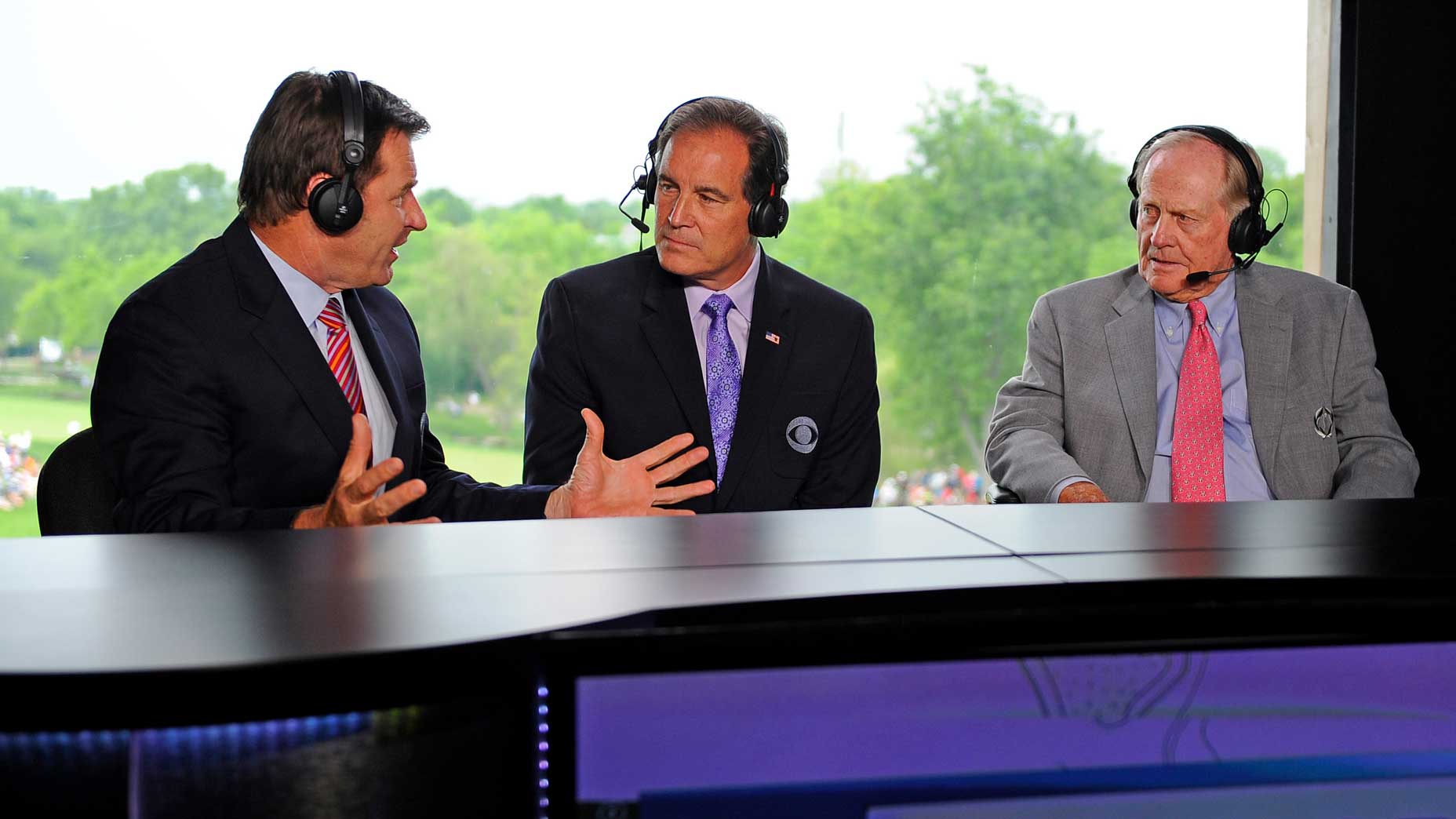One year ago today, Jim Nantz began CBS’s final-round coverage of the Farmers Insurance Open with a cold open. A fisheye lens showed a Torrey Pines canyon, and the Pacific Ocean, and a grey horizon beyond that. Nantz’s tone was somber as he spoke directly into the camera.
“We are live at the Farmers Insurance Open, just outside of San Diego, California, Torrey Pines,” he said. “And like you at home, we’re trying to get our minds around this news that is now being widely reported; the L.A. Times just confirming it, that these reports are true: The sports world has lost one of the great superstars of our time. The reports, again, of a helicopter crash in the last couple of hours 140 miles north of where we are right now in Calabassas, California with Kobe Bryant on board.”
It was hardly the beginning to tournament coverage that anyone on the broadcast team wanted, but Nantz’s open struck just the right tone. He acknowledged the news that was sweeping over the sports world, conveyed its gravity and showed signs of emotion himself, too.
This is how Jim Nantz started CBS’ golf coverage today, with the news of Kobe. pic.twitter.com/JRKkiyoVyt
— Jim Dunaway (@jimdunaway) January 26, 2020
One year later, Nantz remembers every shot of that introduction — and the difficult decision-making process that went into the broadcast that followed.
“I’ve never been asked about that,” Nantz told reporters on a conference call last week. Sometimes that type of answer suggests that the answerer hasn’t considered the subject matter. In this case it meant the exact opposite. Nantz recalled the date, the time and exact timeline of decisions from one of the most surreal days in the industry.
On that Sunday, Jan. 26, CBS was set to take over coverage from Golf Channel at 12 p.m. local time, and as Nantz entered the broadcast tower, someone pulled him aside. It was Tommy Spencer, who has served as Nantz’s editorial consultant for some three decades.
“[Tommy] had an alarmed look and he said, ‘Hey, I don’t know what’s real and what’s not, but there’s some chatter on social media right now that there’s been a horrific accident north of us in Los Angeles, a helicopter crash, and Kobe Bryant might have been on board.'”
The reports had felt like rumors at first — Kobe Bryant?! — but as the team prepared to go on the air, they felt they had enough official confirmation to address the helicopter crash on the air. But time was running short. The college basketball game leading into the broadcast was ending early, which meant golf coverage would go live at the top of the hour. Nantz huddled with lead producer Lance Barrow and the team in the truck as the continued to gather more information.
Changes coming to CBS golf coverage under new leadership in 2021By: James Colgan
“We made a decision at 2:59 Eastern, one minute before we went on air, that we needed to isolate the opening to the broadcast from the golf tournament, and we need to open up the broadcast by addressing this,” Nantz recalled. “It was an exceptionally well-done moment by the team, because they had everything lined up and there was an opening tease and animation and scene sets and the cameras are in position.
“But the short of it is, with just seconds to spare, we came out of black and I ad-libbed for a about a minute, just saying that there were reports out there that had not been confirmed and I told the story of what we knew and what was being reported. And Steve Milton, our incredible director, took a shot of the sky looking toward the heavens and we dipped to black and then began our golf show.”
Color analyst Nick Faldo offered several words of his own at the end of the introduction. “It was a horrible day, the whole thing,” he remembered. “For us to go, ‘Okay, golf!’ we had to get real. Life is so much more important than a golf tournament. But still, we had to present a golf tournament.”
Relatively speaking, how Nantz, Faldo and crew handled Bryant’s passing was insignificant. There was nothing they could do to reverse the day’s tragedy nor meaningfully change the gravity of the moment. But the broadcast team could share in our grief. They could show us a golf tournament while acknowledging that our thoughts were collectively elsewhere. Simply put, they could keep us company.
Monday Finish: A Korda reversal, ‘angry golfers,’ and Paulina’s DJ insightsBy: Dylan Dethier
As the tournament went on, Nantz wondered whether players knew of the day’s events. At one point, CBS got word that Tiger Woods had been informed of Bryant’s passing, which Woods said later wasn’t true.
“We really did assume he would know, because the gallery knew,” Faldo said. “So, we probably wrongly reacted thinking that he had been told, so that’s probably part of the learning curve.”
More information kept coming in about the crash while they were live on air. Official confirmation from news sources and authorities.
“You didn’t know if the players inside the ropes had any idea how the whole nation was mourning,” Nantz said.
On the course, Woods polished off a two-under 70 that left him T9. Rory McIlroy’s charge fell just short; he finished T3. Marc Leishman lit up the leaderboard with five birdies on his front nine; he holed a six-footer for birdie at 18 that would prove the difference in a one-shot victory over Jon Rahm.
“I can barely remember that,” Nantz says now. It’s a stark contrast to his recollections of the Bryant news. “I feel badly saying that about Marc, but what I remember most about that day was the way we came on the air. As live television often demands, you have to have the flexibility, the dexterity to change the mood, and report, and weave your way and report your way through it. As the broadcast went on, I think our voices reflected what the nation was feeling.”
That last bit felt particularly important. What Nantz himself remembers most clearly from the tournament action was the conclusion of Woods’ round. As he came off the 18th green, caddie Joe LaCava said something quietly to Woods.
“Excuse me?” Woods responded.
“What I remember maybe most of all was our cameras following Tiger walking off the 18th, and you could almost hear the conversation as Tiger was being notified about the tragedy,” Nantz said. “Of course, Tiger grew up a huge Kobe fan — and then Amanda [Balionis] did a magnificent interview with Tiger. Yeah, it was just extremely solid.
Tiger Woods reflects on the tragic passing of NBA legend Kobe Bryant. pic.twitter.com/t4F2Sqj57Z
— PGA TOUR (@PGATOUR) January 26, 2020
Woods was clearly still in shock as he answered questions from Balionis, processing the news in real time.
“I didn’t know until Joey just told me coming off 18 green. I didn’t really understand why the people in the gallery were saying ‘Do it for Mamba.’ But now I understand,” Woods said. “It’s a shocker to everyone. I’m unbelievably sad. It’s one of the more tragic days, and I think for me, the reality is just kind of setting in, because I’m just hearing about it five minutes ago.”
It was impossible not to feel for Woods, who had lost his friend and sports hero in front of all of us. But there’s a reason Woods’ reaction spread quickly to every corner of social media: He was an avatar for the rest of us. Woods is rarely relatable in his success, but here he was relatable in his grief. His reaction mirrored our own. I don’t think it’s going too far to say Woods comments helped viewers feel a little less alone.
Looking back now, Nantz is proud of the team’s efforts that day.
“It didn’t feel real, and to this day now coming up on a year later, doesn’t feel real,” he said. “It didn’t that day for the entire crew at CBS who had the obligation to cover a golf tournament and at the same time had the sensitivity for one of the tragic events involving one of the sports heroes of our lifetime.”

